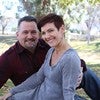Premium workshop
You can view a 2 minute preview. For details, scroll down below the video.
Description
Objectives
• Master techniques to combat tech neck, computer posture, and common alignment issues
• Develop strategies to maintain client focus and quickly redirect wandering attention
• Explore diverse exercises and apparatus applications to help clients achieve optimal posture and alignment
Once you purchase this workshop, the accompanying PDF will appear beneath the workshop description on this page.
About This Video
Workshops: Teaching Methodology
Comments
You need to be a subscriber to post a comment.
Please Log In or Create an Account to start your free trial.




























